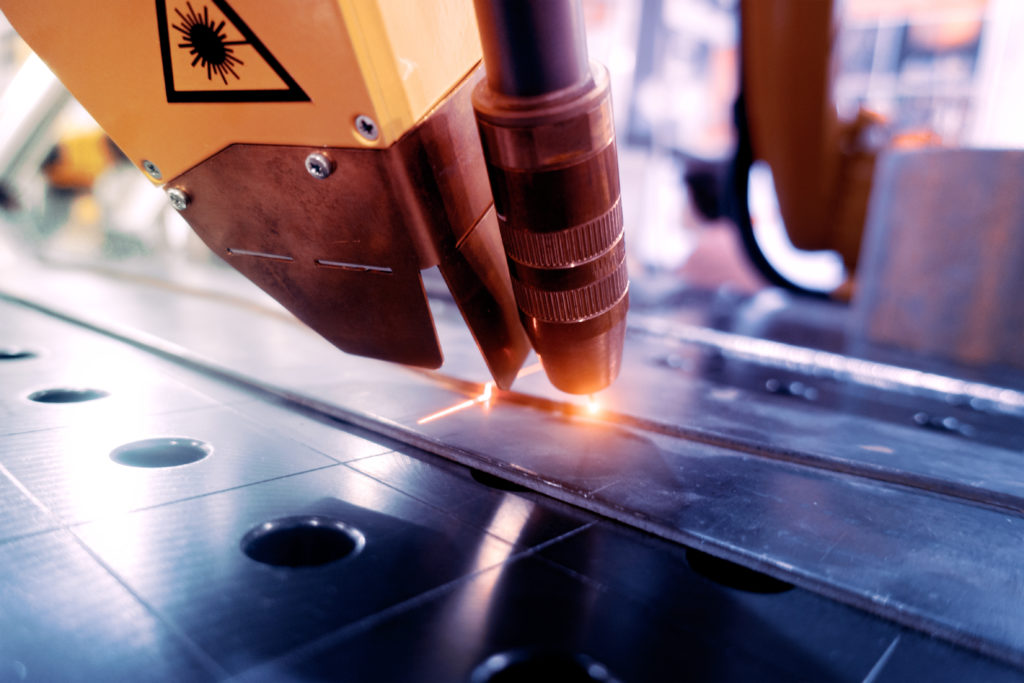Welding is used in many facets of manufacturing processes for countless products and components. Technology has provided a safer way to perform this task. Businesses are increasingly relying on robotic welding systems to do their jobs with fewer accidents, but is robotic welding the right choice for your application?
Robotic Vs. Manual Welding
Robotic welding is an automated process in which mechanical tools are programmed to manipulate parts and perform the welding. In manual welding, an operator applies a heat source to a component by hand.
The biggest differentiator is that robotic welding is done by a machine and manual welding is done by hand, but there are other key differences.
- Troubleshooting: Humans are better at troubleshooting problems. A human will notice a malfunction during the welding process, while a machine will continue working despite the malfunction. The device may indicate that a malfunction has occurred but it cannot diagnose and fix the problem as a human would do.
- Danger: Welding is a hazardous task and a robotic system is not at risk of on-site accidents as humans are. Robotic welding is much safer than manual welding.
- Quality control: Robotic welding is a highly reliable process that produces quality results, but a robotic welding system is only as talented as its programmer. Suppose something needs to be improved during the fabrication process or a problem needs to be fixed. In this case, an automated system would not have the ability to make necessary changes while a manual welder can make in-the-moment adjustments.
- Adaptability: Robotic welders have difficulty switching from one task to another, making it difficult for them to accommodate more than one weld type. Manual welders are more adaptable and can complete a variety of welds more efficiently.

Robotic Welding System Processes
Automated welding guarantees consistent and accurate outcomes. Robotic welding systems can operate continuously, so they complete jobs faster and produce less waste.
Robotic welding capabilities include:
- Arc Welding: In arc welding, an electric arc can produce elevated temperatures up to 6,500°F, melting the metal. Molten metal connects the parts and creates a stable connection after cooling.
- Resistance Welding: Molten metal is created as electrical currents pass between the two metal bases, joining them together.
- Spot Welding: Some materials are resistant to electrical currents. This frequently occurs in the automotive industry when constructing automobile bodies. Robotic welders use a variety of resistance welding to fuse thin metal sheets in a single spot.
- TIG Welding: TIG welding is ideal for applications requiring high levels of precision. An electric arc passes between a tungsten electrode and the metal base.
- Mig Welding: In gas metal arc welding, a heated welding tip makes contact with a wire to melt it. The resulting molten metal drips onto a base allowing it to be joined with another base.
- Laser welding: Laser welding is best suited for high-volume production runs of small parts such as jewelry or medical components.
- Plasma welding: Plasma welding offers the highest level of flexibility because the operator can easily change the speed and temperature of the gas passing through the nozzle.
Is Robotic Welding the Right Choice?
Some applications are better suited to robotic welding to achieve high precision and maintain safety. It is important to consider the benefits and drawbacks of robotic welding in relation to your application.
Benefits
- Weld Quality: Automated processes offer highly repeatable results and faster completion times. It also eliminates the risk of human error due to fatigue which can lead to defects.
- Reduced Waste: Incorrect welds produce scrap metals, while robotic welding produces less waste due to its precision and accuracy.
- Decreased Production Cost: Automated welding machines can operate continuously requiring little to no human interaction, reducing the need to hire additional staff for production.
- Higher Output: Human staff experience fatigue that does not affect robotic systems, which speeds up production and increases output.
Drawbacks
- Initial Cost: Although production costs are reduced with robotic welding, the initial tooling is costly.
- Technical issues: Technical problems are an inherent issue with automated welding machinery. If companies rely solely on automated welding production could be delayed for hours or days.
- Lack of flexibility: Robotic welding machines can complete the same tasks repetitively, but require reprogramming if additional welds or processes are needed.
Conclusion
There are challenges with every welding project that must be considered before deciding whether to use manual or robotic welding. PDF, Inc. creates customized OEM machinery and equipment to meet the unique specifications of our customers.
For more information on how we can help you with your fabrication project, contact us today.
